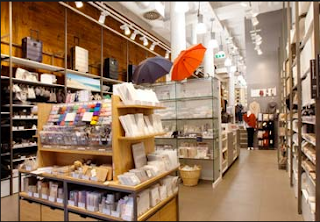Retail Barriers: How They are Used to Disrupt Customer Service and Sales
Retail Barriers: How They are Used to Disrupt Customer
Service and Sales
What is a retail barrier? It is a physical entity, within
the store, that separates the salespeople from the customer. Some examples
include: rolling racks filled with clothes, standalone displays for jewelry or
shoe polish, mannequins, and my favorite, the cash desk.
Many salespeople believe that the current job at hand, say,
tagging clothes on a rack, is more important than greeting a customer and proceeding
with the sales path. It can be justified because some salespeople claim that
they cannot “see” the customer, so they are not approached. In truth, these
salespeople are hiding from the customer.
In one instance, I witnessed a salesperson standing behind
the cash desk shouting out the current store promotion to the sole customer in
the store…who was 25 feet away. Apparently, the work on her computer was too
important to leave. The customer walked out empty-handed. And, I am sure the
salesperson believed she approached the customer and offered service.
Obviously, store displays, and other barriers, play an
important role and should not be eliminated. So, it is up to the salespeople to
work around these barriers. How is that accomplished?
Hiring and Training
Are you hiring someone anxious to prove themselves, or a
warm body on the sales floor? Does the new hire match your company’s vision and
culture? Do they display a willingness to learn and take initiative? In short,
employers have at least 90 days to see if the new hire is a good fit, or not.
However, one cannot terminate an employee in good faith if
there is a lack of skilled training and knowledge sharing. In most retail
situations the store manager is tasked with employee training. Are they qualified?
Do they have the desire and drive to train others? Is performance measured and
reviewed regularly? Is the training program updated or reviewed annually?
Disengagement
Disengaged employees will not work to their potential,
period. Here lies the reason for listening to employees and making them feel
included in store operations. Ask for an opinion. Challenge them to provide
viable solutions to a problem. Discuss corporate decisions that may affect
them. Engaged employees will go the extra mile, and that’s a fact.
Please consider the above points I have made. Otherwise, you’re
paying for someone to hide behind a rack.
If you would like to continue this discussion please email
me at: donaldoconnorspeaks@gmail.com



Comments